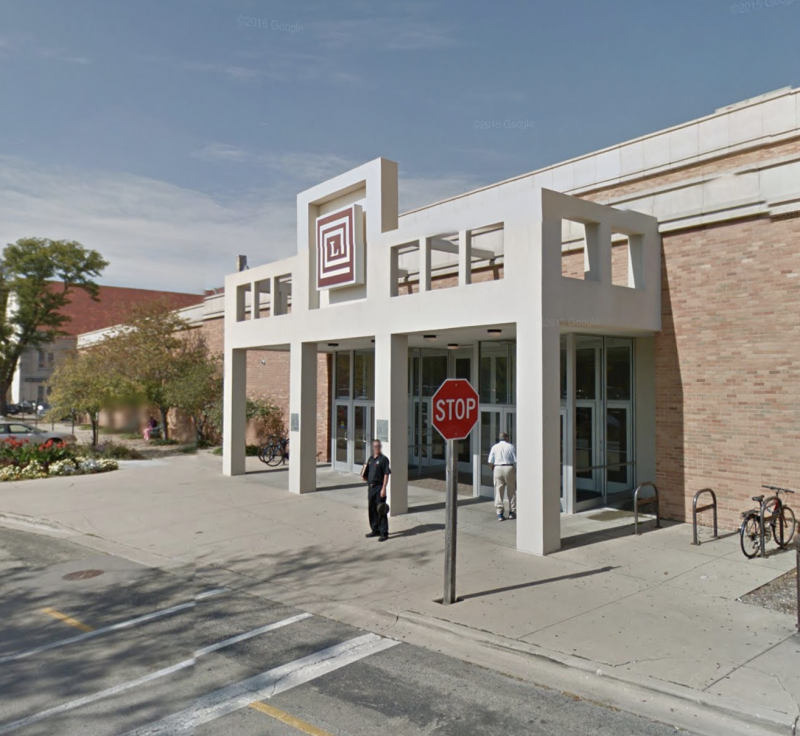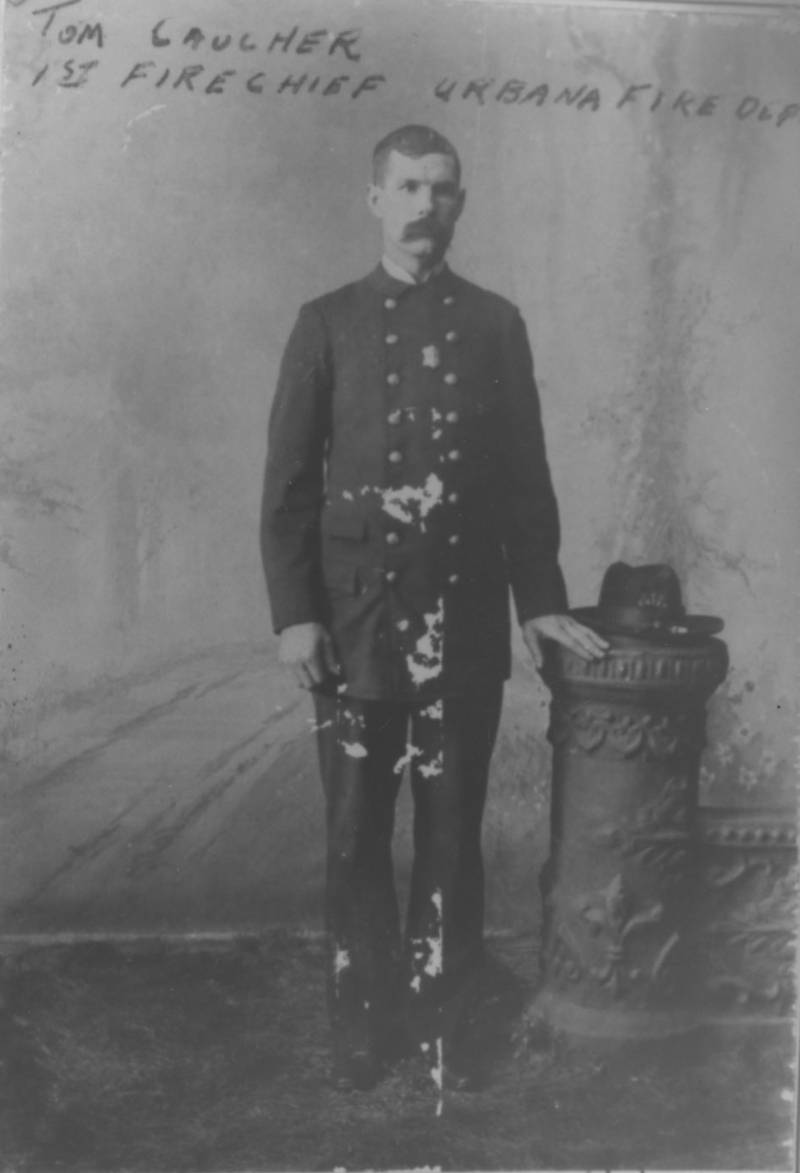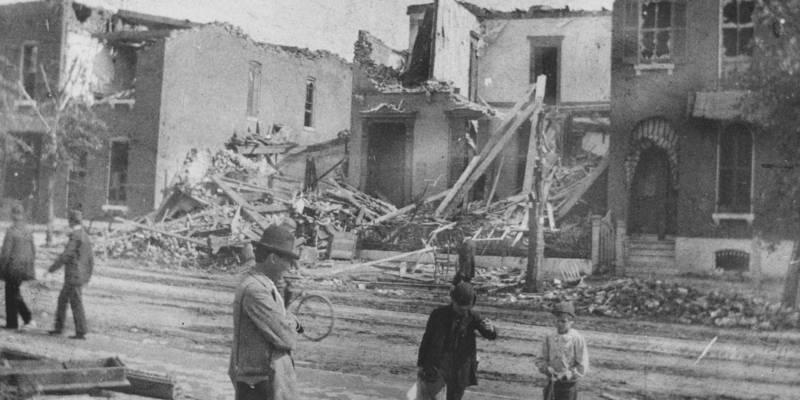As far as fires go, the Great Chicago Fire of 1871 is easily the most infamous. The fire, which torched three square miles of Chicago’s core, killed roughly 300 people and displaced over 100,000 people, has been the subject of movies, team names, and is deeply entrenched into the identity of the city. The fire raged on for three days, beginning on October 8th, burning and smoldering through the 9th, and finally being extinguished on the tenth.
On the very same day, the Peshtigo fire consumed a portion of Northern Wisconsin larger than the State of Rhode Island, killing about 2,000. Because of the rural character of the area and its occurrence during the devastation of the major city Chicago, this fire was never largely reported. Entire families were lost, hundreds of bodies could not be identified, as there were no survivors who could identify them. This event remains the deadliest fire in American history by a large margin, and like many of the smaller fires that occurred in early October 1871, like Port Huron, Alpena, and even Urbana, it is largely forgotten.
The Midwest was a veritable tinderbox following a bone-dry summer of 1871, and this culminated in a string of accidental fires and wildfires occurring between October 8th and 10th. The windy conditions fueled the spread of fires, increasing the swath of charred land and making any attempts to contain them nearly impossible. Fire departments were not as prevalent back then, especially not in rural communities, and none had the technology needed to tackle infernos of this scale. Furthermore, flammable wood was a common construction material; even buildings that appeared to be made out of resilient stone or brick were still largely constructed with lumber. The conditions for fire could not be more favorable.
While Chicago was ablaze, a fire began to roar in Urbana’s downtown.
 An approximate map of the destruction Urbana’s fire based on various from Raymond Bial’s “Urbana: A Pictorial History” (1994).
An approximate map of the destruction Urbana’s fire based on various from Raymond Bial’s “Urbana: A Pictorial History” (1994).
The fire started around the corner of Broadway (then called Market Street) and High Street; this intersection is now the site of the south entrance of Lincoln Square Mall. The fire then moved northwards to the Indianapolis, Bloomington & Wabash railroad tracks on the northern edge of downtown. The fire was rumored to have been caused by a bonfire gone awry. Historical archives don’t indicate any fatalities as a result of this fire, nor do they indicate the exact dimensions of the area consumed by the fire of the fire but the property damage caused was immense. The fire consumed much of Main Street and extended north all the way to the railroad tracks. Only two buildings in the downtown area survived, Busey’s Hall (later the Princess Theater and now the Cinema Gallery) and the Tiernan Building (where Crane Alley is located); both of these buildings were under a year old at the time and owe their survival to the use fire-resilient construction materials. In the absence of a fire department, a volunteer bucket brigade extinguished much of the fire, but not after it charred Urbana’s core.
 Lincoln Square now stands where the fire originated.
Lincoln Square now stands where the fire originated.
Urbana rebuilt. Quickly. The town had experienced rapid development following the Civil War, as Union soldiers returned home — the city received the Illinois Industrial University (later the University of Illinois) in 1867 as a result of the Morrill Act, and the IB&W railroad opened in 1869. The city rebounded with new, safer brick buildings. A new train depot (now the Station Theater) opened in 1899, the new county courthouse was built in 1901, and the Urbana-Lincoln (now Landmark) hotel opened in 1923.

Today, one would be hard-pressed to find any mention of the fire in a public space. There is no plaque, nor are there any murals of Urbana rising from the ashes. Many of the buildings erected after the blaze are also gone, having been cleared to construct the Lincoln Square Mall, parking lots, or newer buildings in the past 100 years. Perhaps because the city rebounded so quickly that the fire is little more than a footnote in the long history Urbana. Despite this, the fire still has a lasting effect today: the Urbana Fire Department. Following the destruction of the downtown, Urbana residents demanded better emergency response services. City leaders listened and in Urbana Fire Rescue was founded in 1874; its first chief, Thomas Kaucher, was appointed in 1894, and the department transitioned from volunteer to paid in 1908. While Urbana’s fire is now a distant memory, its aftermath was a true showing of the resiliency of the area and its impact has made all of us a little safer.
It’s not 1871, but fires still happen! Winter also sees the largest number of house fires of any season, learn which preventative steps you can take here.
Fire damage and fire chief photos from Urbana Free Library archives








